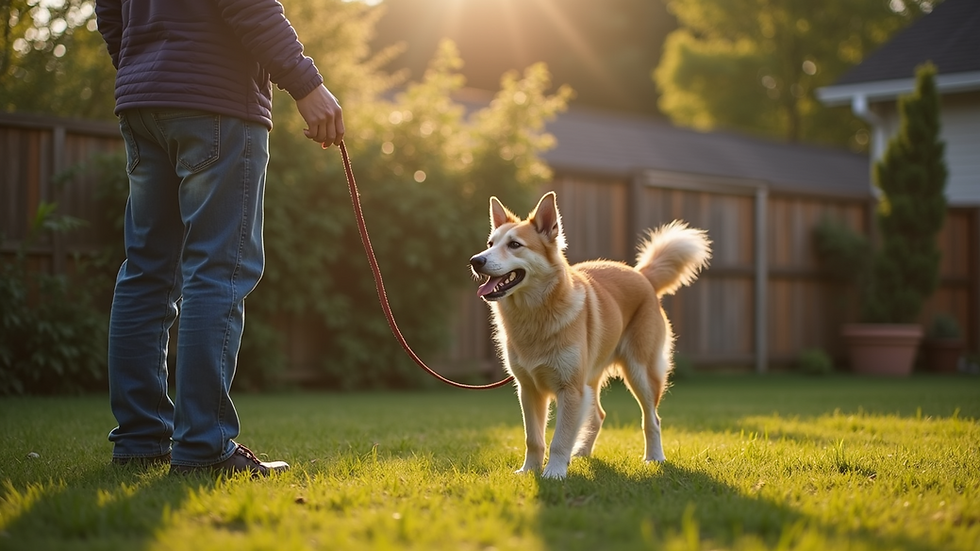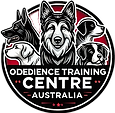Boost Your Dog's Obedience Skills Quickly
- Sybinta Saunders
- Sep 26
- 4 min read
Training a dog can feel like a mountain to climb, especially when your furry friend seems stubborn or distracted. But here’s the truth: obedience training for dogs is not just about commands. It’s about building a connection, setting clear expectations, and creating a routine that your dog understands and enjoys. I’ve seen firsthand how even the most challenging dogs can transform with the right approach. Let’s dive into how you can boost your dog’s obedience skills quickly and effectively.
Why Obedience Training for Dogs Matters More Than You Think
Obedience training is the foundation of a happy, safe, and well-adjusted dog. When your dog listens, life becomes easier for both of you. Imagine walking your dog without the constant tugging on the lead or worrying about them darting off at the park. That’s the power of good training.
Training isn’t just about control. It’s about communication. Dogs want to understand what you expect. They thrive on consistency and clear signals. When you provide that, you reduce their anxiety and frustration. This leads to better behaviour and a stronger bond.
Here’s what obedience training for dogs can do for you:
Enhance safety: Prevent dangerous situations by teaching reliable recall and stay commands.
Reduce stress: A well-trained dog is less likely to act out due to confusion or boredom.
Improve socialisation: Confident dogs behave better around other dogs and people.
Strengthen your bond: Training sessions are quality time that builds trust and respect.

How to Start Obedience Training for Dogs: Simple Steps That Work
Starting training can feel overwhelming, but it doesn’t have to be complicated. Here’s a straightforward plan to get you going:
Choose the right environment
Begin in a quiet, distraction-free space. Your home or backyard is perfect. This helps your dog focus on you.
Use positive reinforcement
Reward good behaviour immediately with treats, praise, or play. This encourages your dog to repeat the behaviour.
Keep sessions short and frequent
Aim for 5-10 minute sessions, 2-3 times a day. Dogs learn better in short bursts.
Be consistent with commands
Use the same words and gestures every time. For example, say “sit” clearly and use a hand signal.
Gradually increase distractions
Once your dog masters commands at home, practice in busier places like parks or near other dogs.
Stay patient and calm
Dogs pick up on your emotions. If you’re frustrated, they might shut down. Keep a positive, encouraging tone.
Remember, every dog learns at their own pace. Celebrate small wins and keep the momentum going.

Can I Obedience Train My Dog Myself?
Absolutely! Many dog owners successfully train their dogs at home. The key is to be informed and consistent. Here’s what you need to know:
Educate yourself: Read up on dog behaviour and training techniques. There are plenty of resources online and books that can guide you.
Set realistic goals: Start with basic commands like sit, stay, come, and down. Don’t rush into advanced tricks too soon.
Use the right tools: A good leash, treats, and a clicker (if you choose) can make training easier.
Observe your dog’s personality: Some dogs respond better to food rewards, others to toys or praise. Find what motivates your dog.
Seek help when needed: If you hit a wall, don’t hesitate to consult a professional. Sometimes a few sessions with an expert can make all the difference.
Training your dog yourself can be incredibly rewarding. It deepens your relationship and gives you confidence in handling your dog’s behaviour.

Overcoming Common Challenges in Dog Obedience Training
Training isn’t always smooth sailing. Here are some common hurdles and how to tackle them:
Distractions: Dogs get easily distracted by noises, smells, or other animals. Start training in calm environments and slowly introduce distractions.
Lack of motivation: If your dog isn’t interested in treats or toys, try different rewards. Sometimes a quick game or affection works better.
Inconsistent responses: Everyone in the household must use the same commands and rules. Mixed messages confuse your dog.
Impulsiveness: Some dogs struggle to control their impulses. Practice impulse control exercises like “wait” before meals or going through doors.
Frustration: If your dog isn’t catching on, take a break. Training should be fun, not stressful.
Remember, patience is your best tool. Celebrate progress, no matter how small.
Advanced Tips to Speed Up Your Dog’s Obedience Progress
Once your dog masters the basics, you can speed up progress with these tips:
Use a training schedule: Consistency is key. Set specific times each day for training.
Incorporate training into daily life: Practice commands during walks, before meals, or when guests arrive.
Vary your rewards: Keep your dog guessing and motivated by mixing treats, toys, and praise.
Practice proofing: Test your dog’s obedience in different environments and situations.
Stay calm and assertive: Your energy influences your dog. Be confident and clear.
If you want to take your dog’s skills to the next level, consider professional dog obedience training. Experts can tailor programs to your dog’s needs and help with tough behaviours.
Your Journey to a Well-Behaved Dog Starts Today
Training your dog is a journey, not a race. With the right approach, even the most challenging dogs can become obedient, happy companions. Remember to be patient, consistent, and loving. Celebrate every success and keep your sessions fun.
If you ever feel stuck, professional help is just a click away. The right guidance can transform your dog’s behaviour and your life together.
Start today. Your dog is ready to learn. Are you ready to lead?





Comments